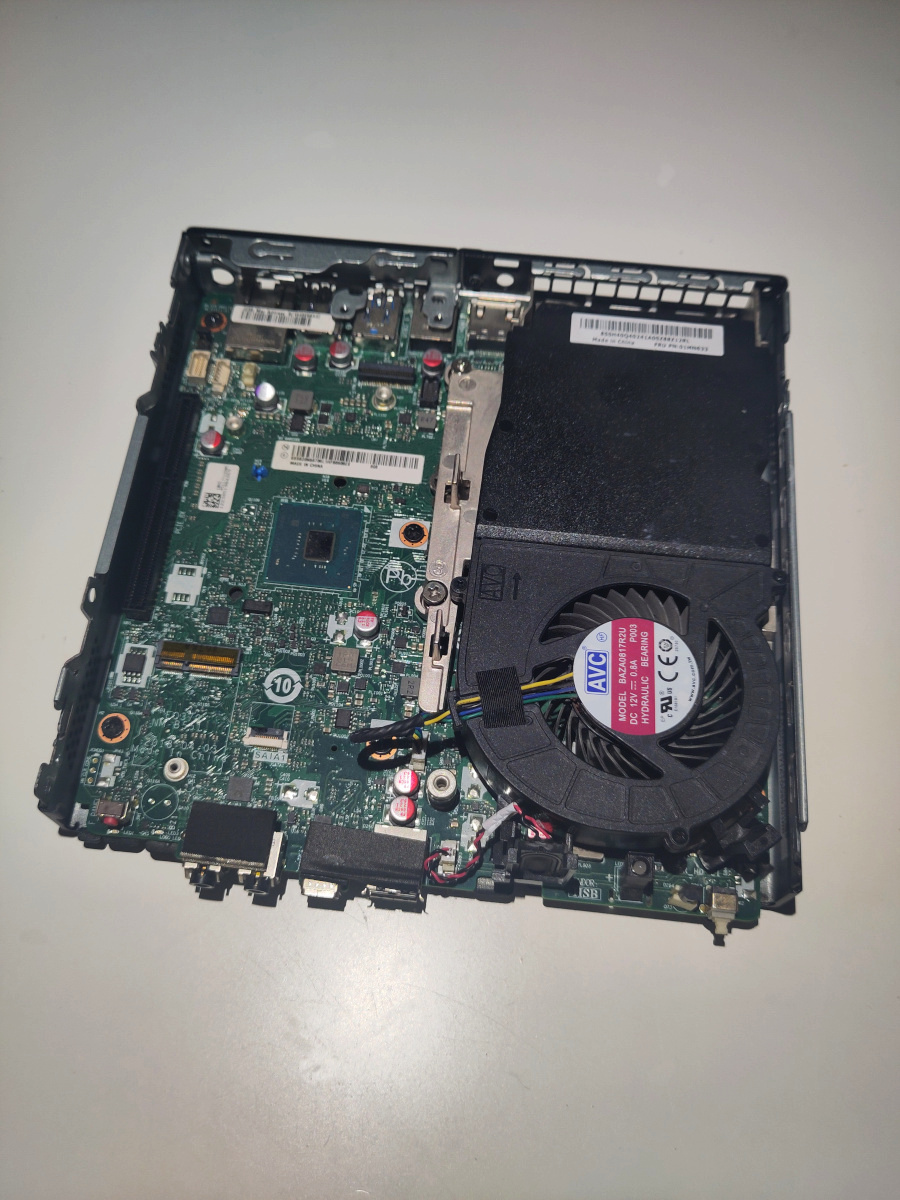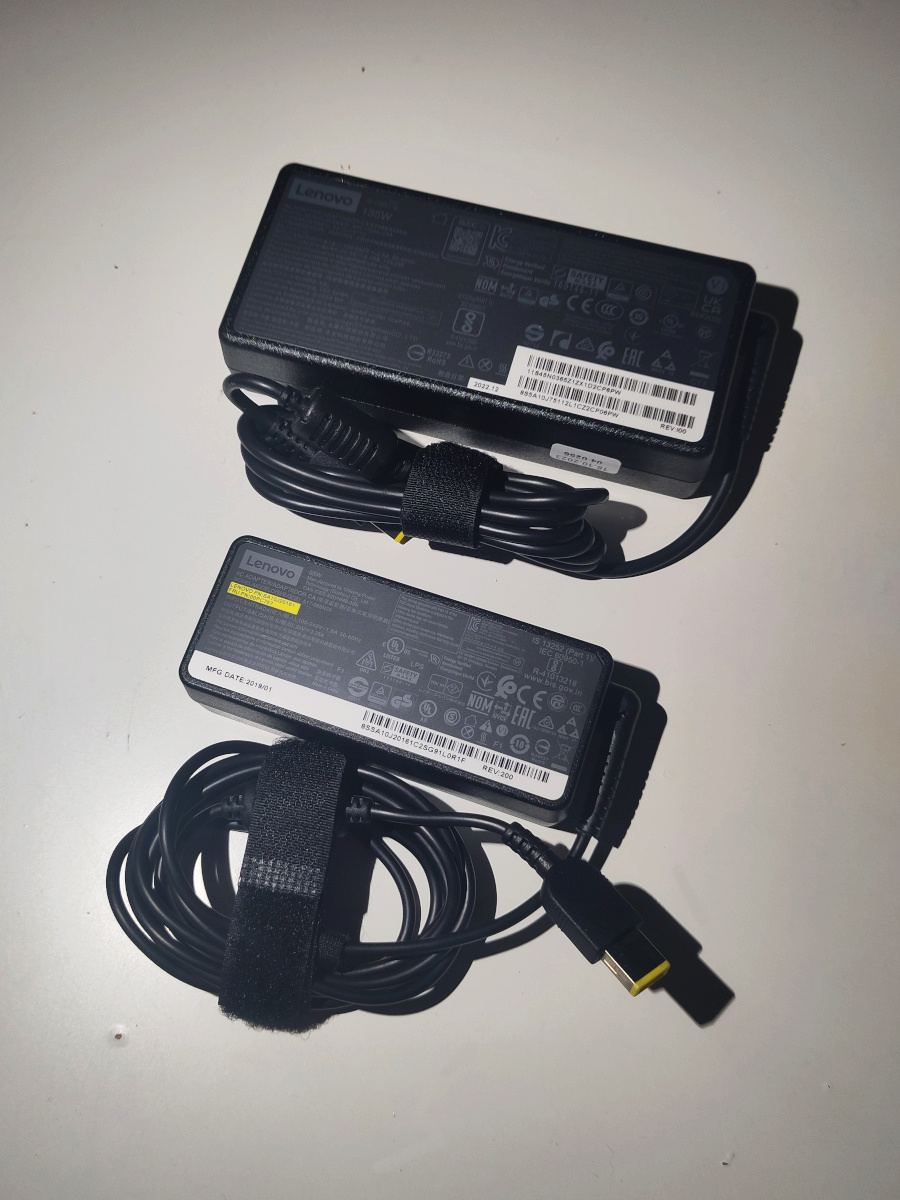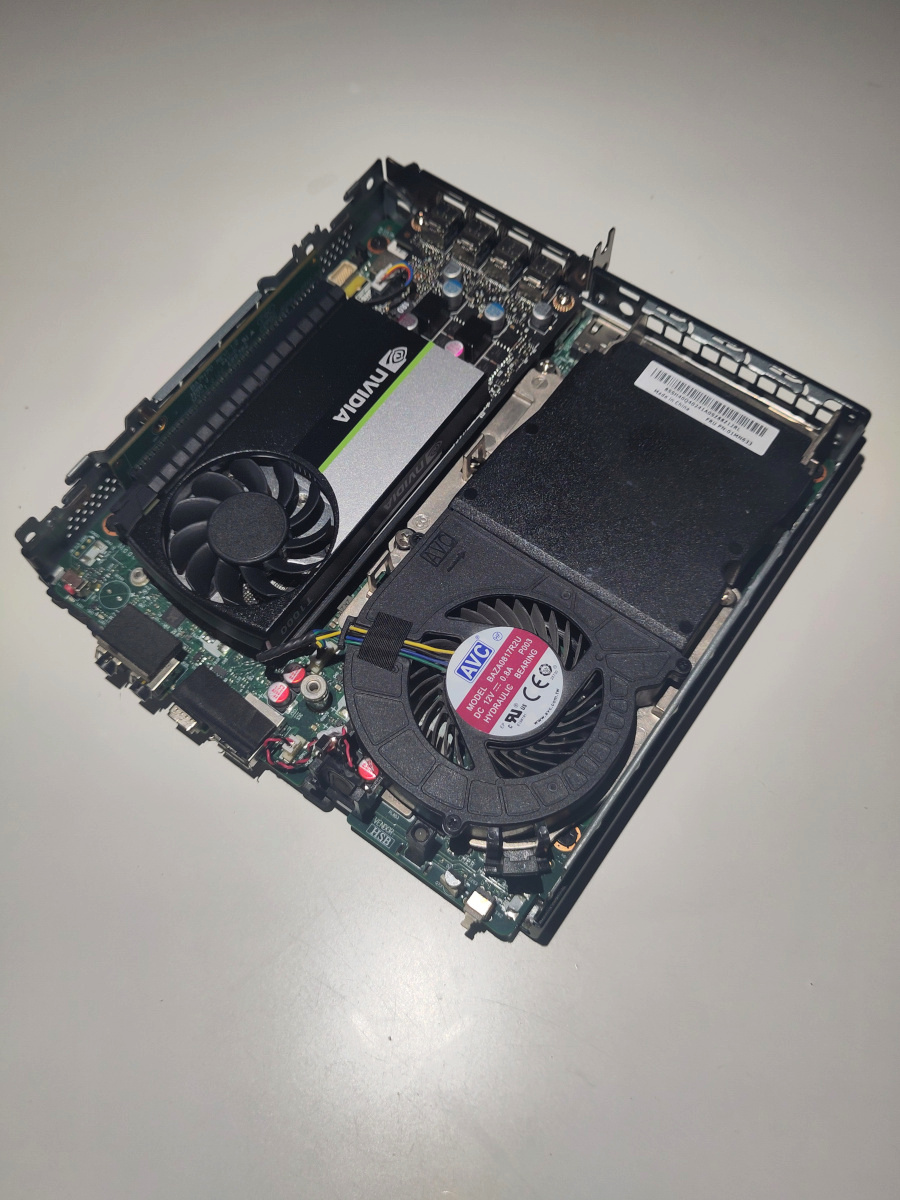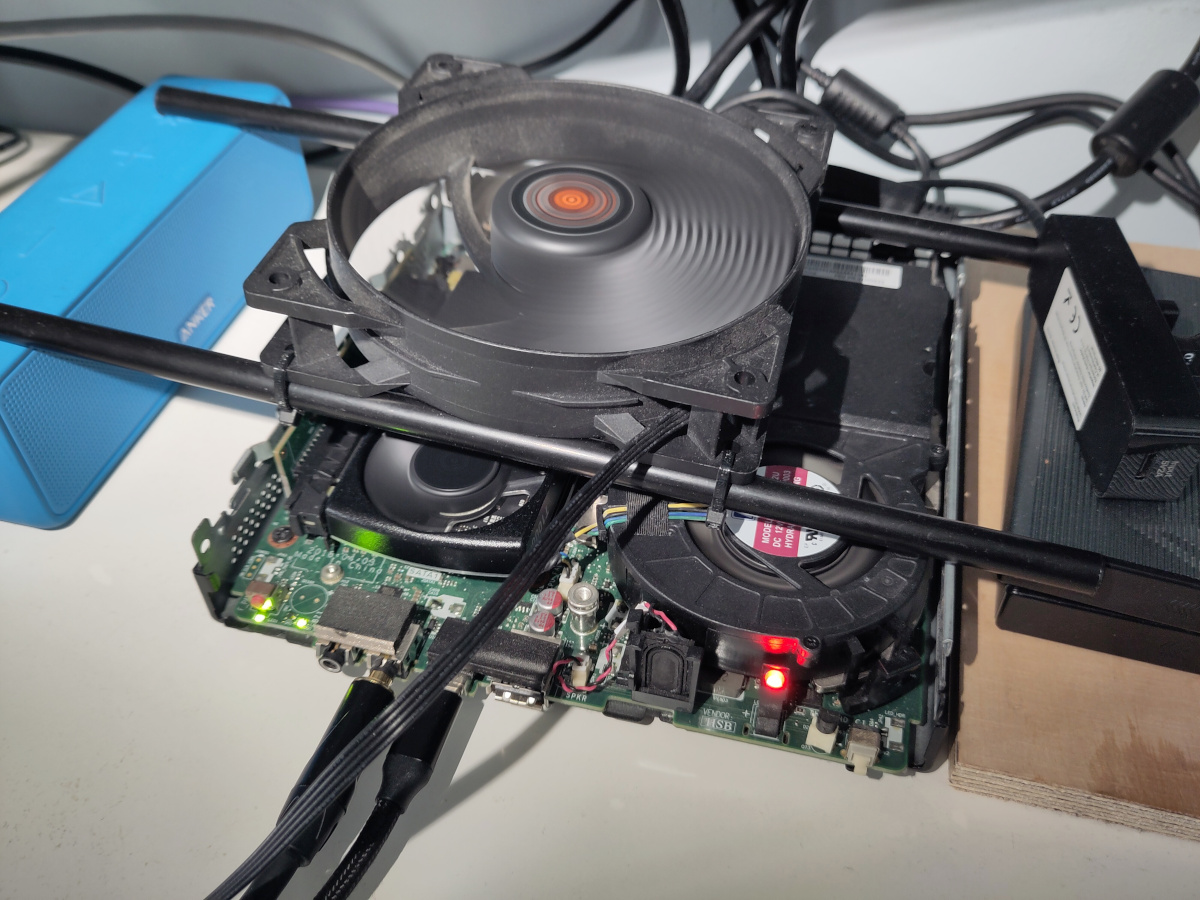How I bought a Tiny PC and turned it into a GPU workstation / gaming rig
I have not had a desktop PC since spring of last year. At that time I sold my desktop because I felt laptops were enough for me, it was taking up a lot of desktop space and its configuration made any significant upgrades costly.
As time passed I start to miss the capabilities of a full size PC, mostly the power of a discrete GPU. Not only for gaming, but also for other stuff, like GPU acceleration for tasks like astrophotography postprocessing.
However, I cannot right now justify buying a whole large, powerful PC because I am in the middle of building a house, and every not-strictly-required expense is postponed until we move in and stabilize there. Also in our current flat space is always a constraint.
So what to do?
Last year I bought a Lenovo mini PC, an M625q, and it has been great as a tiny, low-power box running Home Assistant. With only two cores of an Atom-like AMD CPU, I would not try to use it for anything else.
Reading more about the Lenovo lineup, I came across something very interesting: Certain Lenovo Thinkcentre Tiny models have an PCIe slot, and allow for using a low profile GPU! That raised my attention. Maybe I could make a small box with a discrete GPU, and do stuff impossible on a typical laptop? By a typical laptop I mean something small with an integrated GPU, not those gaming beasts that look like an RGB brick combined with a vacuum cleaner.
Buying the base version
After doing research, I narrowed my search to the Lenovo ThinkCentre M720q Tiny. Those models have an 8th gen Intel CPU (three types available), DDR4 RAM and an NVMe SSD slot. And most important, they also have an internal PCIe slot for expansion cards!
Recently I have been doing most of my IT shopping on Vinted. I know, Vinted is mostly famous for buying clothes, but for some time now they have also an Electronics category, and quite a few people are selling their stuff there. The prices are good, and from my experience, the public is more reasonable than on the other large flea marker platforms.
After a few weeks of casual hunting, I finally bought the tiny computer. Inside was an i5-8400T CPU with 6 cores 6 threads, 8GB of RAM in a single stick, and a 250GB NVMe SSD. Power supply included. For all that I paid 580PLN (~140EUR), with shipping.
A week later it arrived, basically looked like new inside and outside. Despite that, I replaced the CPU thermal paste, because I had some lying around. On the software side, I removed Windows as quickly as possible, and installed Kubuntu 25.04, my go-to distro right now.
And from the start, it has been working like a charm. It’s snappy in daily tasks, quiet, and has no problems handling dual 1440p displays. All in all, much better than the Lenovo T495 laptop I’ve been running for the last months, with only the portability being lost. But I’m keeping the laptop for those rare occasions when I want to take a computer with me somewhere.
With the basics sorted out, came the time to upgrade this smol machine.
 The insides of the Tiny with everything removed to make way for the GPU
The insides of the Tiny with everything removed to make way for the GPU
Upgrades
I started with upgrading the RAM. I replaced the single 8GB stick with two sticks of 3200MT/s 16GB DDR4 SODIMM RAM. With 32GB of RAM, I will be able to run things like large development environments if I ever want to. Also I feel like dual channel made it even snappier, but that may be a placebo effect.
I haven’t yet upgraded the storage. With a separate NAS for storing all the stuff, the 250GB internal NVMe SSD is enough, at least for now, and I have some SSDs in external USB enclosures is I ever need more directly attached storage.
The GPU
But they main part, the part I have been eyeing from the beginning, has been the GPU. And putting a GPU in that tiny thing is a multi-step process.
The first thing to do is upgrade the PSU. The M720q uses an external power supply, the same as their pre-USB-C laptops, with a yellow rectangle plug. The one that came with the computer was a standard 65W PSU. To use the GPU, I had to first buy the 135W version to give it more juice. That was 90PLN (~21EUR)
 Comparison of the PSUs, the 135W one on top
Comparison of the PSUs, the 135W one on top
The second part needed is a 90 degree riser for the PCIe slot. Lenovo sells one for serious money, but I got a replacement from Aliexpress for 21PLN (5EUR). Took two weeks to arrive.
And finally, the GPU itself. The Tiny machine only accepts similarly tiny GPUs, meaning single slot and low profile. At first I was considering getting the AMD RX6400, but sadly, for the things I want to do, I need native CUDA support. I’ve heard there are now ways to run CUDA on AMD GPUs, but I don’t feel like going into that rabbit hole. So the only option for me was going with the Nvidia Quadro lineup. The Quadro GPUs are aimed at workstations, and they are usually smaller, don’t have the gamerly bling, and use less power, often not requiring an external power connector.
I was at first aiming at the Nvidia Quadro T400 as a good middle ground between price and power. The T in the name means the Turing generation, so the same as the 16XX generation of their mainstream GPUs. I did not want to go older than Turing because it’s the oldest generation that still has ongoing driver and CUDA support.
But alas, good luck shined upon me, I found a T1000, a much faster model for a price close to the P400, so I went with that one. I too found it on Vinted, and it came from Lithuania. Came in two weeks, looking mint. The description was that it was removed from some Dell prebuild.
The card is a typical Quadro GPU, single slot, half length, low profile card with 50W max TDP, meaning no additional power connector is required. According to benchmarking sites, it’s similar in performance to a GTX1650.
In contrast, my main homelab is now running an Nvidia 3060 12GB with 160W TDP which requires an additional 6+8 connector from the PSU.
Putting stuff together.
With all the parts delivered, the time came for the big ceremony.
To install the GPU, first most things need to be removed from the PC. This model of ThinkCentre allows two hard drives to be installed, one is an NVMe in an M.2 slot in the motherboard, and the second one is a 2.5” SATA SSD in a caddy. The caddy takes the space for the GPU so it had to go. I also removed the WiFi card and its antennae. Antennae? Antennas? Aerials? Those gizmos. With that, there was space for the GPU. I first connected the GPU with the riser, and put them into the PCIe slot in the motherboard.
One thing I have not resolved in advance is the bracket. To mount the card to the back of the box a special bracket is required, but it turns out the card can live without it. It just lies on the back wall of the case, and it’s fine as long as nobody pulls too hard on the monitor cables. I found out it can be 3D printed, and that is what I will do once I have a printer.
The first start
The card came with a miniDP to Display Port adapter, so I used it to plug one of my monitors to the first output socket on the card, and with the case still open, I pushed the On button. And it started, the fans came on, video output live, Kubuntu launched like usual. I now have a usable GPU! The next thing for me was to install the CUDA drivers that I need for some of my workloads, but that is a story for another episode.
Gaming
I would not call myself a gamer, I just like playing a few games, and I’ve been playing the same three or four games for the last decade. The main hope I have had of this GPU was to be able to play Civilization V on high settings.
And indeed it runs and is playable. The game is not as snappy as on my old desktop, but that one had a 16 thread Ryzen 7, so a totally different league.
The thermals
I played the game for 15 minutes, all happy, ignoring the blaring fans… and the computer turned off. When I touched the GPU, I burned my finger. Turns out that even without the case, and the fans at full speed, that tiny blower fan is not able to cool GPU enough to stop it from shutting down from thermal overload.
The rescue came from my Drawer of Random Cables accompanied by the Box of Random Computer Parts. Below is the result of the cooperation of that magnificient duo.
A long time ago I bought on Aliexpress a “female barrel jack to 3 pin fan header” cable, and I have a BeQuiet 120mm fan lying around. I took the fan, the cable, and a random 12V wall wart, and with the help of some zip ties and, I think, legs from an old desk lamp, I placed the contraption above the PC. Yes, I am a hoarder, but sometimes that helps.
I admit, it looks awfully janky, the combined fans are so loud I can only play in ANC headphones, but it works, I’m now able to play as long as I want. According to nvtop and htop the CPU and GPU temps are around 60-70C.
The bottom line
So yeah, this pile of mess looking like something from Fallout is now my workstation/desktop PC/gaming rig. Maybe some day I will make it nicer, make a 3D printed case to with a place for the fan, but for now it works. All in all, I am very happy with it, it uses very little power (proper power consumption measurements to come), even with that fan and cables it is indeed tiny, and allows me to do more stuff than with just a laptop.
Thanks for reading!
If you enjoyed this post, please consider helping me make new projects by supporting me on the following crowdfunding sites:

